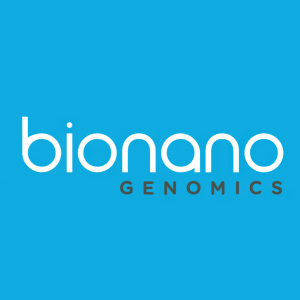Bionano Genomics Announces Publication of Study from Sorbonne Université Showing that WGS Identified only 63% of Structural Variations that OGM Detected in Liver Cancer
Bionano Genomics (BNGO) announced a study revealing the efficacy of optical genome mapping (OGM) in investigating hepatocellular carcinoma (HCC). Published in Cancer Research, the research demonstrated OGM's capability to detect replication stress-induced structural variations (SVs) more effectively than whole genome sequencing (WGS). The study found that OGM identified 1.4 times more SVs than WGS, illustrating its potential in understanding oncogenesis mechanisms. CEO Erik Holmlin highlighted OGM's sensitivity for large SV detection, emphasizing its complementary role alongside WGS.
- OGM identified 1.4 times more SVs than WGS, indicating enhanced detection capabilities.
- Study highlights OGM's potential to improve understanding of cancer mechanisms.
- Risks associated with the effectiveness of OGM may impact adoption and commercialization.
- Future studies might not support the current findings, posing uncertainty for investors.
SAN DIEGO, Oct. 04, 2022 (GLOBE NEWSWIRE) -- Bionano Genomics, Inc. (Nasdaq: BNGO) today announced the publication of a study showing the use of optical genome mapping (OGM) to investigate a molecular subgroup of hepatocellular carcinoma (HCC), which is the most common form of liver cancer, in order to explore the complex structural variations (SVs) induced by replication stress. In this study, OGM helped unravel replication stress-induced events, which may cause or contribute to genomic instability in cancer cells, potentially leading to the activation of oncogenes and disruption of tumor suppressors.
The study, published in the journal Cancer Research by a team at Sorbonne Université, used a workflow that combined OGM and whole genome sequencing (WGS) in an effort to maximize the detection of pathogenic variants and likely pathogenic variants, and to investigate complex rearrangements and resolve them at base pair resolution. The workflow also allowed researchers to compare OGM to WGS, and they reported that, in this study, of all SVs detected using OGM, only
“Cancer is often thought of as a disease of structural variation, and this study illustrates how OGM has the potential to help unravel the complex mechanisms involved in oncogenesis. It shows that OGM can be more sensitive for detecting large structural variations than WGS and it provides a nice example of how complementary the two methods are,” commented Erik Holmlin, PhD, president and chief executive officer of Bionano Genomics.
This publication can be found here: https://pubmed.ncbi.nlm.nih.gov/35395067/
About Bionano Genomics
Bionano Genomics is a provider of genome analysis solutions that can enable researchers and clinicians to reveal answers to challenging questions in biology and medicine. The Company’s mission is to transform the way the world sees the genome through OGM solutions, diagnostic services and software. The Company offers OGM solutions for applications across basic, translational and clinical research. Through its Lineagen, Inc. d/b/a Bionano Laboratories business, the Company also provides diagnostic testing for patients with clinical presentations consistent with autism spectrum disorder and other neurodevelopmental disabilities. Through its BioDiscovery business, the Company also offers an industry-leading, platform-agnostic software solution, which integrates next-generation sequencing and microarray data designed to provide analysis, visualization, interpretation and reporting of copy number variants, single-nucleotide variants and absence of heterozygosity across the genome in one consolidated view. For more information, visit www.bionanogenomics.com, www.bionanolaboratories.com or www.biodiscovery.com
Forward-Looking Statements of Bionano Genomics
This press release contains forward-looking statements within the meaning of the Private Securities Litigation Reform Act of 1995. Words such as “can,” “may,” “potential” and similar expressions (as well as other words or expressions referencing future events, conditions or circumstances) convey uncertainty of future events or outcomes and are intended to identify these forward-looking statements. Forward-looking statements include statements regarding our intentions, beliefs, projections, outlook, analyses or current expectations concerning, among other things, the ability and utility of OGM to complement WGS and detect SVs in hepatocellular carcinomas. Each of these forward-looking statements involves risks and uncertainties. Actual results or developments may differ materially from those projected or implied in these forward-looking statements. Factors that may cause such a difference include the risks and uncertainties associated with: the impact of the COVID-19 pandemic on our business and the global economy; general market conditions; changes in the competitive landscape and the introduction of competitive technologies or improvements to existing technologies; failure of future study results to support those demonstrated in the paper referenced in this press release; failure OGM to achieve useful complementarity with WGS or to detect SVs in hepatocellular carcinomas; changes in our strategic and commercial plans; our ability to obtain sufficient financing to fund our strategic plans and commercialization efforts; the ability of medical and research institutions to obtain funding to support adoption or continued use of our technologies; and the risks and uncertainties associated with our business and financial condition in general, including the risks and uncertainties described in our filings with the Securities and Exchange Commission, including, without limitation, our Annual Report on Form 10-K for the year ended December 31, 2021 and in other filings subsequently made by us with the Securities and Exchange Commission. All forward-looking statements contained in this press release speak only as of the date on which they were made and are based on management’s assumptions and estimates as of such date. We do not undertake any obligation to publicly update any forward-looking statements, whether as a result of the receipt of new information, the occurrence of future events or otherwise.
CONTACTS
Company Contact:
Erik Holmlin, CEO
Bionano Genomics, Inc.
+1 (858) 888-7610
eholmlin@bionanogenomics.com
Investor Relations:
Amy Conrad
Juniper Point
+1 (858) 366-3243
amy@juniper-point.com

FAQ
What are the findings of Bionano Genomics' study on optical genome mapping?
What does the recent Bionano Genomics study imply for cancer research?
How does optical genome mapping compare to whole genome sequencing according to Bionano Genomics' study?
What potential risks did Bionano Genomics mention regarding the OGM technology?







